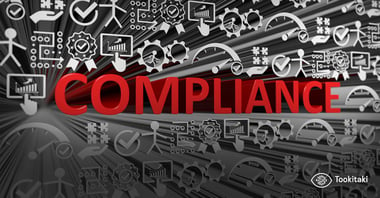What Is Anti Money Laundering And What You Need to Know?
In order to combat the problem of money laundering, countries through various agencies formulate anti money laundering compliance programmes or AML compliance programmes. These programmes lay down procedures to conduct important anti money laundering activities such as transaction monitoring, sanctions screening and know your customer (KYC).
In this article, we will look in detail at the importance of money laundering to safeguard economies and societies.
Money laundering
Most of the illegal or criminal activities such as illegal arms sales, smuggling, and the activities of organised crime, including, for example, drug trafficking and prostitution rings, generate millions of dollars in cash. The individuals or groups involved create ways of “laundering” the money to obscure the illegal nature of how it is obtained.
Money laundering has been addressed in the UN Vienna 1988 Convention Article 3.1 describing Money Laundering as:
“The conversion or transfer of property, knowing that such property is derived from any offense(s), for the purpose of concealing or disguising the illicit origin of the property or of assisting any person who is involved in such offense(s) to evade the legal consequences of his actions”.
According to the United Nations Office on Drugs and Crime (UNODC), the estimated amount of money laundered globally in one year is 2 - 5% of global GDP, or $800 billion - $2 trillion in current US dollars.
AT A GLANCE
- Money laundering is the process of legalising money obtained from illicit sources. It's a major financial crime with economic effects.
- Anti-money laundering are regulative measures and procedures to detect and prevent money laundering and making it difficult for financial criminals to hide their illegal origin.
- Financial institutions are required to establish an effective AML compliance programme, monitor customer transactions and report suspicious financial activity.
Anti-Money Laundering (AML)
The social consequences of money laundering are far-reaching and potentially highly destabilising for a state. To prevent, detect and combat money laundering from criminal enterprises, drug dealers, corrupt public officials, and terrorists both financial institutions and governments adopted a counter-move – defensive regulatory Anti-Money Laundering (AML) policy.
Anti-money laundering (AML) is a combination of laws, regulations and procedures used by a financial institution to prevent money laundering. Effective anti-money laundering regulations and procedures are of great importance to protect the integrity of markets and the global financial framework.
Why must we combat Money Laundering?
Money laundering has potentially devastating socioeconomic effects as laundered money can be used to gain control of large sectors of the economy through investment. It can also transfer economic power to criminals.
By hiding the source of their funds, criminals evade government tax. As a result, we have to pay more taxes because of those who evade taxes. It also increases government expenditure on increased law enforcement and health care (for example, for treatment of drug addicts).
Anti-Money Laundering and global organisations
Global organisations such as the Financial Action Task Force on Money Laundering (FATF), an intergovernmental body, have established a set of regulations that is recognised as an international framework of AML standards. These AML regulations help institutions to detect, report, and prevent suspicious activities.
The United Nations Office on Drugs and Crime also offers practical assistance and encourages transnational approaches to action.
Anti-Money Laundering in Financial Institutions
Major financial institutions, such as banks, play an important role in money laundering. So it is of utmost importance that the employees of these institutions are properly trained on how to identify and handle money laundering. Almost every bank employee receives training to some degree to detect and monitor suspicious customer activity.
Though all the institutions are legally obligated to follow anti-money laundering regulations, some do not agree with them. Sometimes ineffective policies raise the question of the net benefit of having them in place.
AML Compliance Programmes
An AML Compliance Programme must establish a set of procedures and regulations an organisation must follow to discourage and prevent potential violators from engaging in money laundering.
For the AML Compliance Programme, an AML compliance officer is appointed whose job is to build an internal AML Compliance Programme for the institution.
Anti-money laundering compliance programmes of a bank must address some key areas:
- Know Your Customer (KYC)
- Transaction monitoring
- Transaction screening
- Suspicious activity reporting
- Record Keeping Obligations
AML challenges
Across the globe, financial institutions are facing major challenges in implementing their anti-money laundering efforts.
- Detection of criminal activities as financial criminals are benefitting from the newest technologies and are becoming smarter, more professional and better organised.
- Continuous change or increasing regulations increases pressure on AML compliance expectations
- Cost of compliance
In order to build effective AML compliance programmes, it is important for financial institutions to rely on new-age technologies such as artificial intelligence and machine learning, which not many providers do. Tookitaki provides cutting-edge AML solutions that can improve compliance teams’ efficiency and effectiveness significantly.
To learn more about our solutions, speak to one of our AML experts here.
Anti-Financial Crime Compliance with Tookitaki?
.png?width=250&height=104&name=PNG%20-%20Montserrat%20LOGO%20-%20a%20Thunes%20company%20(White).png)
-1.png?width=200&height=83&name=PNG%20-%20Montserrat%20LOGO%20-%20a%20Thunes%20company%20(White)-1.png)



